For the first time, diamond cichlazomas were discovered in fresh waters of America. Due to their unpretentiousness and good adaptive abilities, fish began to be bred in captivity. They look beautiful in an aquarium: bright colors attract eyes, it is interesting to observe them because of their unusual nature. The average lifespan of cichlazoma is 10-15 years, depending on the conditions of detention.
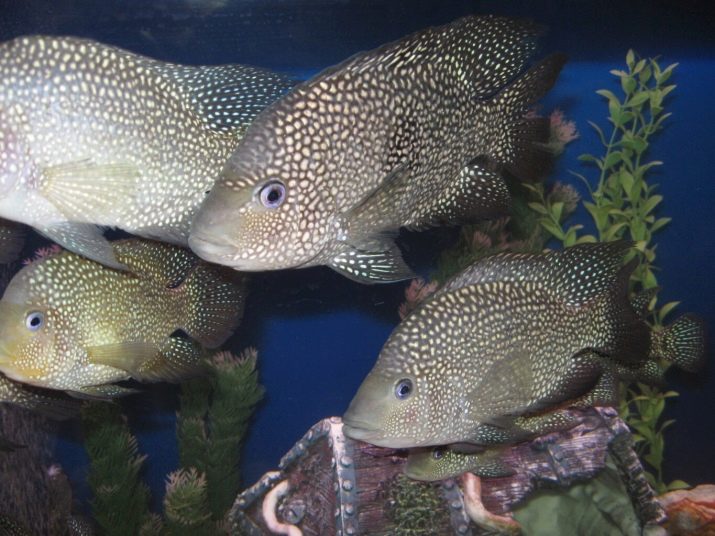
Description
The body color of the young individual is pearl gray with blue or turquoise dots similar to a diamond placer. Bright points merge on the head and fins, forming beautiful stripes. In the middle of the body and near the caudal fin there is a pair of black spots. With age, the color of the body changes to gray, and the number of dark spots increases to about 5 pieces. Not so long ago, hybrid forms were bred: diamond red cichlazoma with a scarlet abdomen and diamond cylinder cichlazoma - a short-bodied fish with a beautiful olive shade.
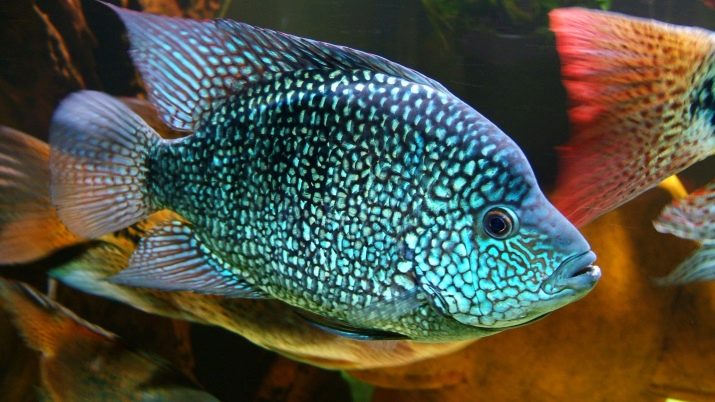
The fish are quite large, in the aquarium they can grow up to 20 cm in length, and in natural habitats - up to 30 cm.
The size of the head is voluminous, with a concave line of the forehead. Cichlomas, like many cichlids, have teeth, they are located on the jaws and the last arc of the gills. On the dorsal and anal fins there are spikes with which the fish attacks and defends itself from enemies.
Cichlazomas are very aggressive, they zealously guard their territory. At the same time, both male and female can attack. The subject of the attack is fish of other species, relatives and even the hands of the owner.Aquarists talk about cases of aggression towards objects behind glass; sometimes fish jump out of the tank in order to cause damage to the enemy. Intelligence is well developed in cichlases; they can be trained, for example, to swim by a signal for food. They recognize the owner and often watch what is happening behind the glass of their underwater world.
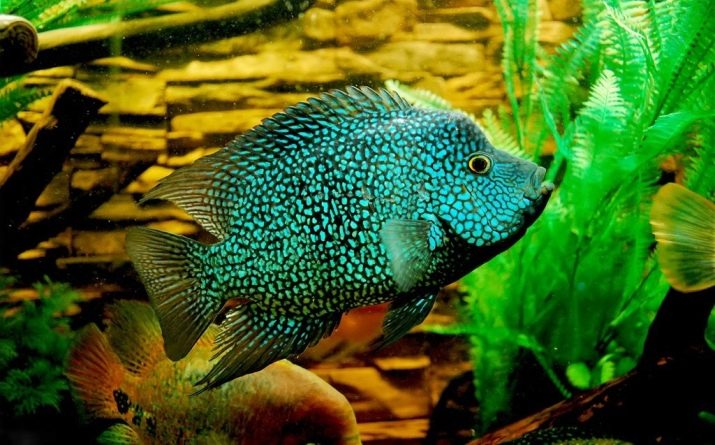
Differences between male and female
In order to determine the sex of an individual, it is enough to pay attention to the color of the body. The male is brighter, with contrasting shades and beautiful sparkling tints.
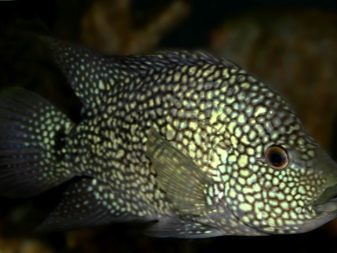
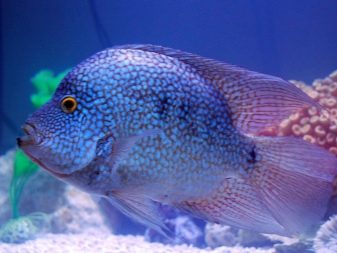
The female looks a little more modest: the body color is lighter, and the diamond placer is paler.
Besides, males are larger, they have a well-defined forehead on which a tall fat cone grows. Such a growth indicates a dominant position in the pack. It is worth paying attention to the dorsal and anal fins, in the male they are longer and sharper than in the female.
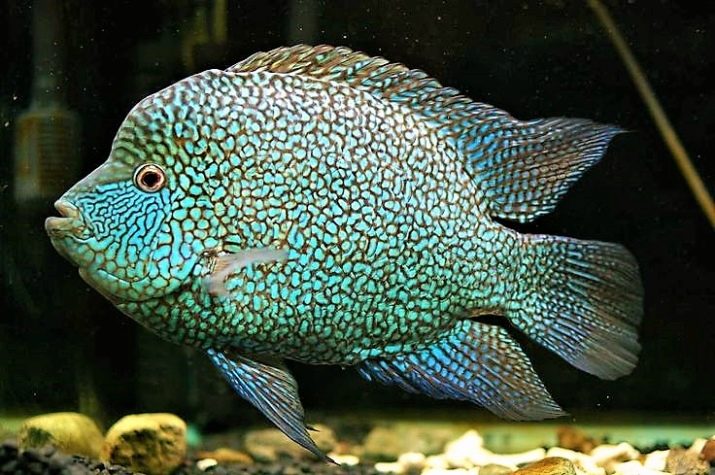
Content Features
Cichlazomas need a lot of space. In order for the fish to reach its maximum size, it needs an aquarium with a volume of 200 liters, and for a couple - at least 400 liters. Although aquarists successfully keep them in smaller containers - from 120 l, it should be borne in mind that in such a tank the size of the cichlazoma will be small. The water requirements are standard, as with all cichlids:
- temperature - 23–26 ° C;
- acidity Ph - 6.5–8.0;
- hardness dH - 25 °.
Aquarium is not recommended to be placed near windows and radiators.
The tank must be equipped with a high-quality filter, but fish are undemanding to the lighting power, they do not need too bright light.
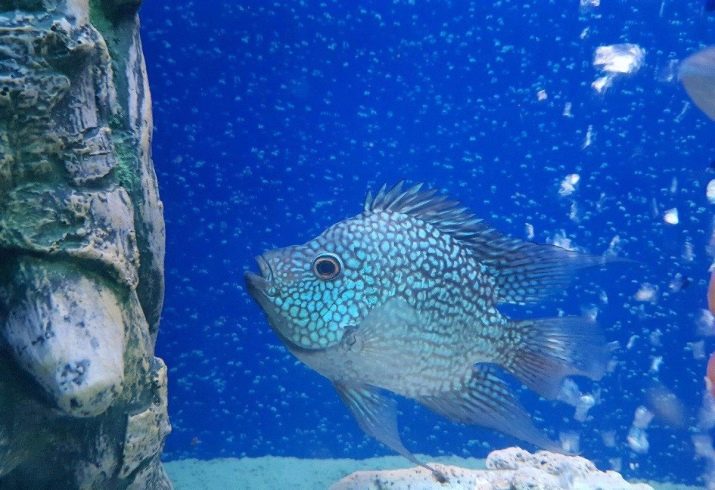
They like to spend time near the bottom, digging in the ground. Therefore, it is recommended to pour a thick layer of sand or small pebbles at the bottom of the aquarium.
The tank with cichlazomas can be originally decorated with snags, pots, and figures. The objects divide the water territory into zones, this allows several fish to coexist peacefully. Algae are best chosen with a powerful root system. Cichlazomas often attack plants: they tear, bite, pull them out of the sand, so it is recommended to plant vegetation deep in the ground, and even better in pots. For cichlids, you can choose the following algae:
- hygrophil;
- Anubias
- nymphaeum;
- sagittaria;
- echinodorus;
- Wallisneria
- Elodea.
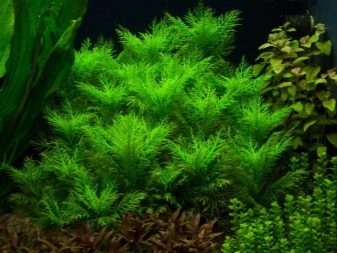
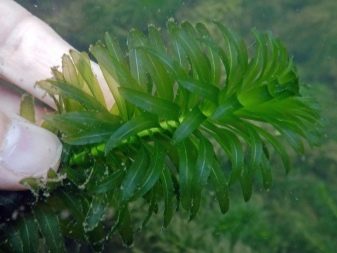
During the life of the fish, harmful ammonia is released from the feed residues and dead parts of the plants, so the water is changed weekly. In the new aquarium, this procedure is carried out only a month after the ecosystem that is comfortable for the fish is formed. In order not to upset the balance of beneficial microorganisms, the liquid is drained only by 25%. To do this, you can use the hose: one end is placed in an aquarium and the other in an empty bucket.
It is important to pay attention to the decor elements: large stones, figures and shells need to be cleaned, and plants thinned out by removing the yellowed algae.
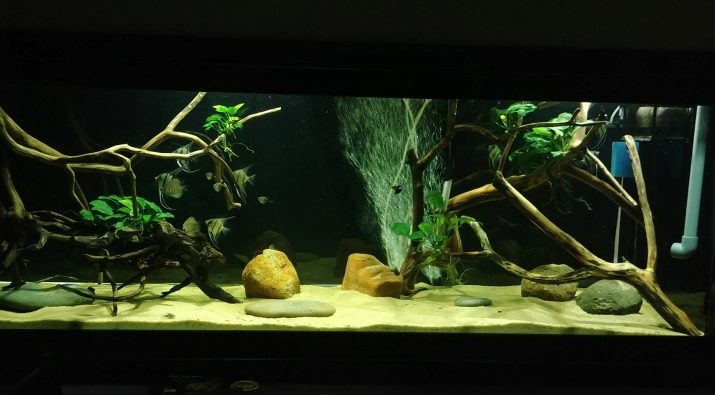
The aquarium is filled only with settled water, which was in a dark place in a clean vessel for at least three days. Water pipes contain a large amount of harmful impurities. Thanks to sedimentation, they sink to the bottom and water becomes safe. In addition, the temperature of the liquid is equalized to a comfortable room temperature, which reduces stress for fish. Complete replacement of water is carried out only when fish diseases occur. Some drugs are added directly to the water, and after treatment, they must be removed with water.
An important part of fish care is feeding. Giving food to an adult is recommended 2 times a day in small portions, fry - 3 times a day.
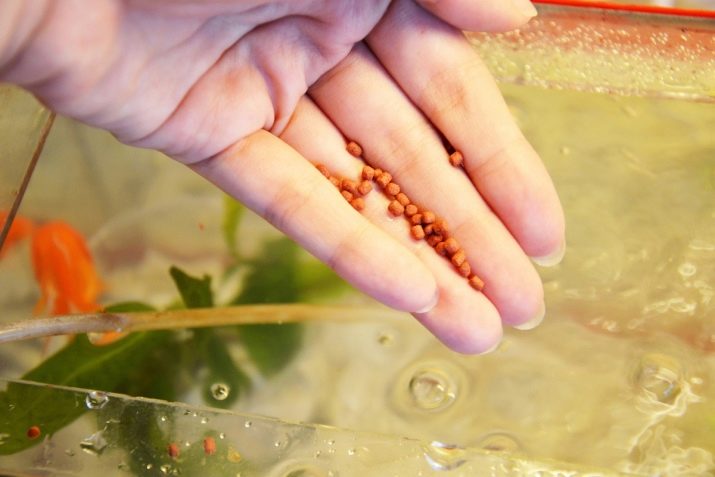
The number of servings is established empirically, the main thing is that the food is completely absorbed by the fish. Otherwise, food debris will begin to rot and release harmful substances. There are many good diets for diamond cichlazoma:
- cyclops - a small crustacean of red color, is well absorbed and suitable for feeding young individuals;
- diaptomus - a crustacean with a hard shell, contains a large amount of protein;
- daphnia is a branched crustacean; “soft” species are suitable for feeding cichlomas;
- Artemia - a crustacean, which contains valuable nutrients;
- bloodworm - contains a huge amount of protein and carbohydrates, suitable for feeding adult fish;
- coretra - mosquito larva, considered the safest food for aquarium fish;
- tubule - a small-bristle worm, they can feed young animals.


Food can be given dry, frozen or live, the latter option is preferable. It is recommended to alternate different types of food and include in the diet herbal and vitamin supplements:
- spirulina:
- soybean:
- nettles;
- salad;
- carrot;
- basil;
- anise;
- cabbage leaves;
- fishmeal;
- lysine.
These products help maintain health and make fish color brighter.
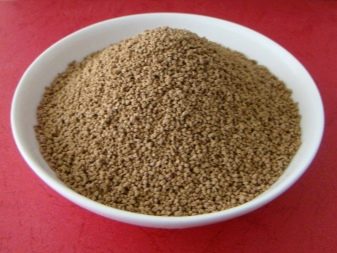

Large cichlazomas are happy to eat shrimp and earthworms. But it is not recommended to include animal meat in their diet.
Beef and pork can cause obesity in the internal organs of the fish, causing it to die.
Compatible with other fish
Do not forget that cichlomas are predators, and guppies, neons, veil tails and other peaceful fish can become their food. Therefore, neighbors should be chosen by diamond beauties with special scrupulousness. Cichlazomas, even to their younger relatives, can show aggression. Young animals are less belligerent and may suffer from adults who will drive them from their territory and take away food.
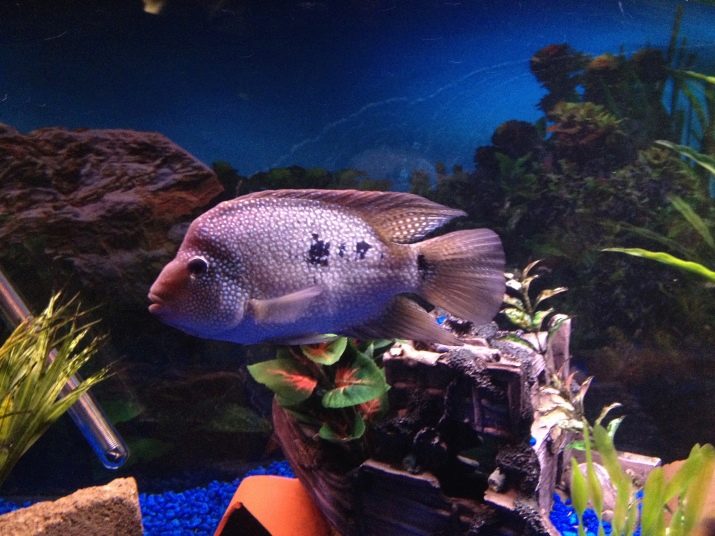
Still, many breeders want to have a beautiful aquarium with a variety of fish species, so some manage to hook up neighbors with cichlomas.
For these purposes, choose large-sized fish that can stand up for themselves. The following types are suitable:
- black pacu, another name - herbivorous piranha, which reaches gigantic sizes - up to 70 cm;
- brocade pterigoplicht - large catfish;
- gourami - among them they choose strong individuals who can repel the attack;
- black knife - a large but elegant fish of an unusual shape;
- plekostomus - catfish cleaner with a strong shell;
- barbs - despite their small size, these nimble fish can stand up for themselves;
- turquoise Akars - beautiful bright blue fish of the cichlid family;
- other types of cichlazoma, for example, meek, red-necked or eight-lane.
A tsikhlazoma is ready to put up with strangers if she herself has enough space.
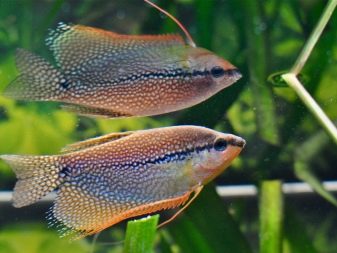
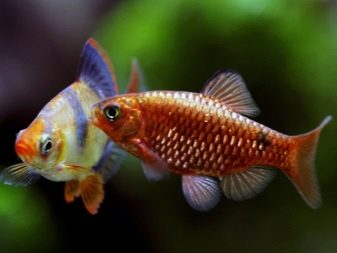
Therefore, in order for the neighborhood to be successful, the fish are kept in bulk aquariums - more than 500 liters.
Much depends on the nature of the individual, because each has unique habits. Some can get along with their neighbors, while others categorically reject strangers. There are times when the cichlazoma does not want to live with strangers in any way, it terrorizes even very large fish, which are 2-3 times bigger than it. In this case, it is better to provide a diamond cichlase with a separate territory or divide the aquarium into two zones.

Breeding
Diamond cichlazomas choose a chosen one once and for a lifetime. In a flock of young animals, couples gradually begin to form, females and males independently look for a partner.
Puberty occurs when the fish reach 8–10 cm. For spawning, a separate aquarium is allocated, where the male and the female are transplanted.
In order to start the breeding process, create favorable conditions:
- increase water temperature by 2 degrees;
- include high protein feed in the diet;
- change water more often - it should be perfectly transparent;
- filtration and aeration of water is mandatory.
If all the points are met, love games begin, which look a little rude: the fish whirl around each other, “bite” and “fight” with their tails.
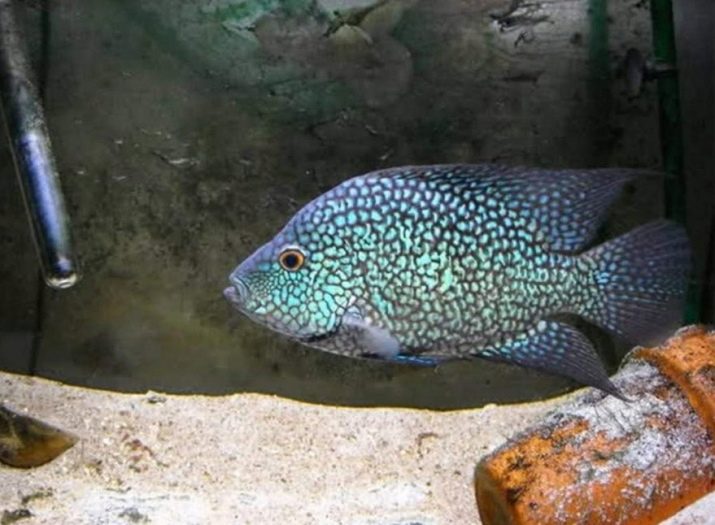
If the female is ready for spawning, she changes color: the front of the body becomes light, and the back darkens.
The male chooses a place for masonry and thoroughly cleans it.It can be a smooth surface of driftwood, a flat stone, less often plant leaves. The female lays eggs, which the male immediately fertilizes.
Tsihlazomas jealously guard the masonry: fins, remove non-viable eggs and maintain cleanliness. But during this period, the male can become more aggressive even in relation to the female and future offspring, therefore it is better to remove him from the spawning ground. Otherwise, he can eat caviar and ruin his partner.
On day 2–6, larvae hatch, which the female carefully transfers to a previously prepared hole.
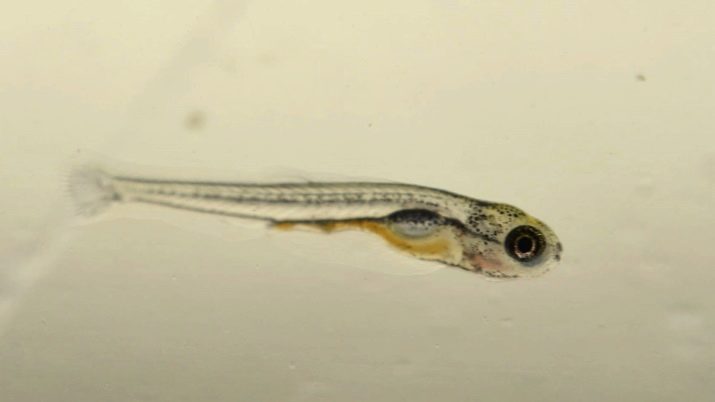
The first 4 days they are almost motionless and eat due to the yolk sac.
When it dissolves, you can already feed the fry. There are special feeds for this:
- live dust - a colony of microorganisms that provides young animals with all the substances necessary for growth;
- nematode microworm - a nutritious live food;
- Artemia eggs and nauplii.
You can give specialized dry food, but fry on them grow more slowly. Females take care of babies until a certain point, but as soon as the fry are strong, take shape and grow to 1 cm, the maternal instinct disappears.
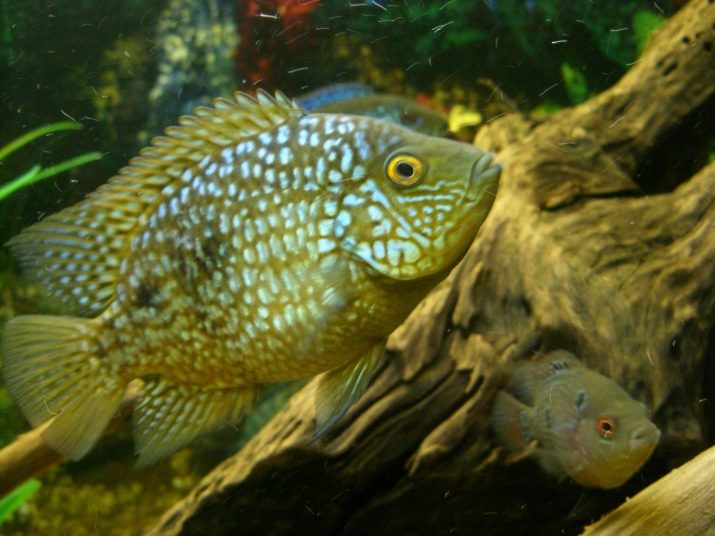
Therefore, it is better to put it off, there are frequent cases of eating offspring. Growing fry are gradually transferred to normal food, give a finely chopped tubule and bloodworm.
Young individuals are transferred to a common aquarium when their size is greater than the distance from the lips to the gills of the largest male in the cichlid. In the first week, you need to watch how teenagers get settled in a new house. In the case of a brutal attack by adult fish, young people are isolated and try to be placed in a common aquarium a little later.
About diamond cichlamosis see below.










